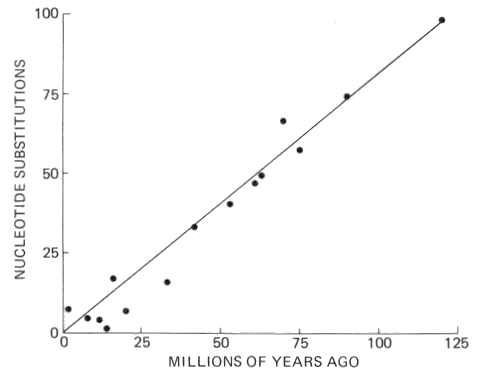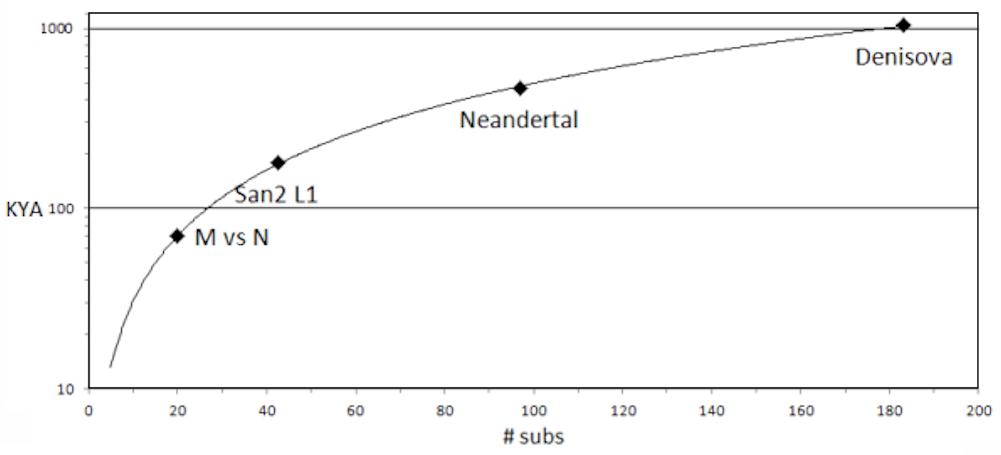

Molecular Clocks


Molecular Clocks
Prior to the
1960s, estimates of the time of divergence of various organismal
groups were based entirely on fossil evidence. Such inferences
required several assumptions, notably that a particular fossil
could be placed reliably as the ancestor of an extinct or living
group. For example, there was for many decades argument as to
where the 10 MYA fossil Oreopithecus was in the
lineage of Anthropoid apes or Hominoid humans. If the latter,
this would push back the origin of human bipedalism and cranial
characteristics, and our divergence from other Anthropoids. The
earliest molecular studies of Chimp / Gorilla / Human
differences suggested a much more recent ancestor < 5 MYA.
These data and date were rejected by most paleontologists, until
the discovery in 1974 of the intact 4.2 MYA Australopithecus
skeleton of "Lucy", with many features of
modern hominids. Oreopithecus is now recognized as a
large anthropoid ape.
[Left] Inferred
pairwise nucleotide substitutions among 17 pairs of
mammal species from seven gene products, as estimated from
protein studies, plotted against date of divergence, as
estimated from the fossil record (AC Wilson, 1976). The line is
drawn from the origin through the oldest comparison at the upper
right (the well-dated marsupial / placental divergence 125
MYA). The strong linear relationship suggests that molecular
differences between pairs of species are proportional to the time
of their separation, not the degree of
organismal difference. Therefore, measures of genetic
divergence can be used to date the time of
divergence for species pairs for which no fossil data are
available. Accumulated genetic differences function as "Molecular
Clocks".
[Right] Measured
pairwise nucleotide divergences in the mitochondrial DNA
(mtDNA) genomes among modern and extinct hominids,
calibrated as a log-linear plot. The M vs N
divergence is the basal separation of all non-African humans. The San2
sequence in the African L1 lineage is the most
divergent from all other living humans. Both
separations are well dated. Complete mtDNA genomes
have been recovered from fossil Neandertals and Denisovans
from Central Asia. Radiometric dating places their
separation from Anatomically Modern Humans (AMHs)
at 500 and 1,000 KYA, respectively. The
log-linear curve fitting provides a "multiple hit"
correction, where DNA sites in the older comparison
have undergone more than one change.